Improving transportation research with passively-collected location data
Danielle McCool and Barry Schouten
2019-03-04
WIN sensor data projects
- Travel/mobility
- Stakeholders RWS/KiM
- Location (GSM, Wi-Fi, GPS) and motion sensors
- Time use
- Stakeholder SCP
- Location (GSM, Wi-Fi, GPS) and motion sensors
- Possibly wearables
- Budget expenditure
- Eurostat project @ HBS
- Location (GSM, Wi-Fi, GPS) and camera
- Fitness/physical activity
- Stakeholders RIVM, GGD
- Wearables
WIN sensor data projects
- Travel/mobility for RWS/KiM
- Time use for SCP
- Budget expenditure as Eurostat project @ HBS
- Fitness/physical activity for RIVM and GGD
This project on Travel and mobility
- Both UU and CBS
- Stakeholders RWS/KiM
- Location (GSM, Wi-Fi, GPS)
CBS verplaatsingen app
Fieldtest (Nov-Dec) to evaluate recruitment and data collection strategies as well as general data quality
- Analyses
- Quick-turnaround set for making future decisions
- More comprehensive set for quality analysis and methodology development
- Team
- Danielle McCool as PhD
- Two EMOS students (Katie Roth and Laurent Smeets)
- Trainee (Lars Killaars)
- WIN researchers
Dimensions of the data
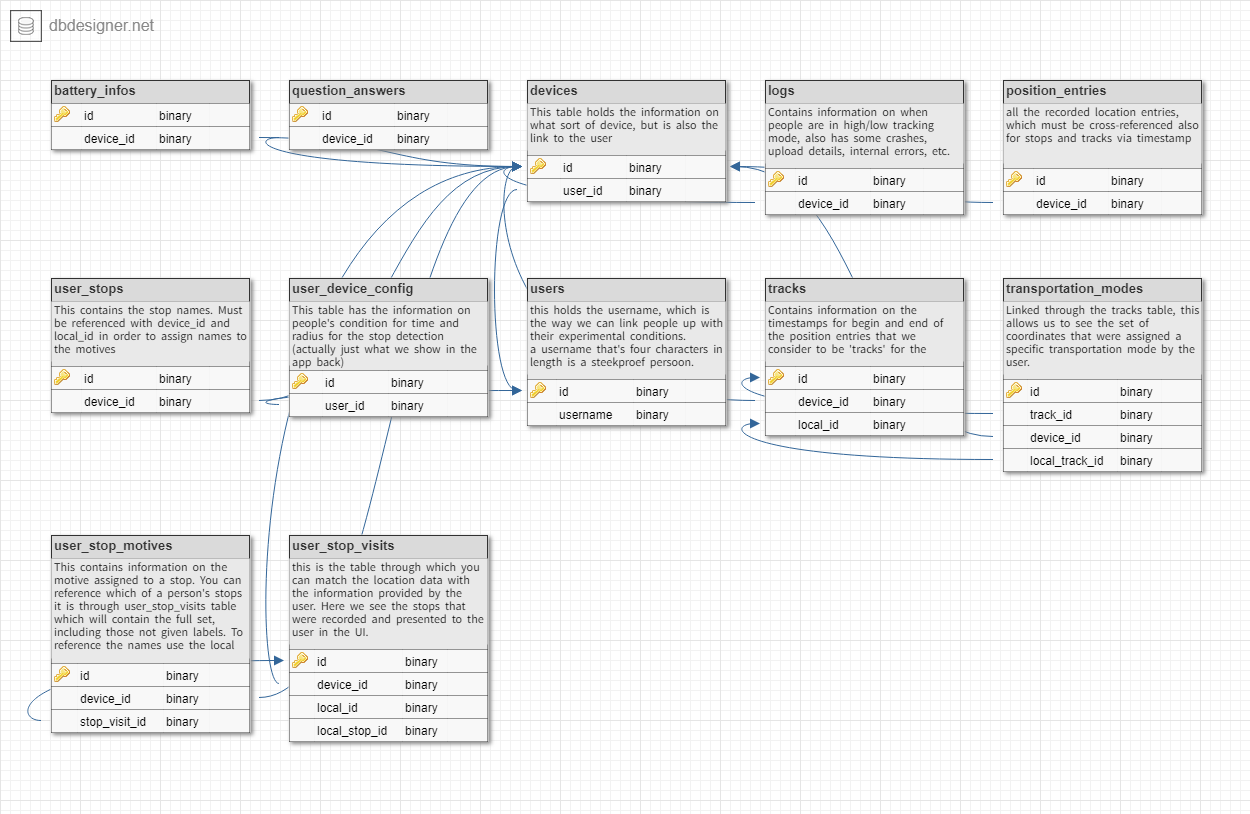
Important bits
- Device information
- Location data
- Track data
- Stop data
- Daily Questions
Device information
- Make
- Model
- OS
- OS version
Location data
- High-tracking mode: 1 measurement per second
- Low-trackign mode: 1 measurement per minute
Track data
- Start time
- Stop time
- Transportation mode
Stop data
- Start time
- Stop time
- Stop name
- Stop motive
Daily questions
- “Did you have your phone with you today?”
- “Was today a normal day for you?”
Interesting challenges
- Incomplete data
- Device differences
- Strange sensor measurements
- Sensitivity vs. battery life
- What is a stop
What is a stop?
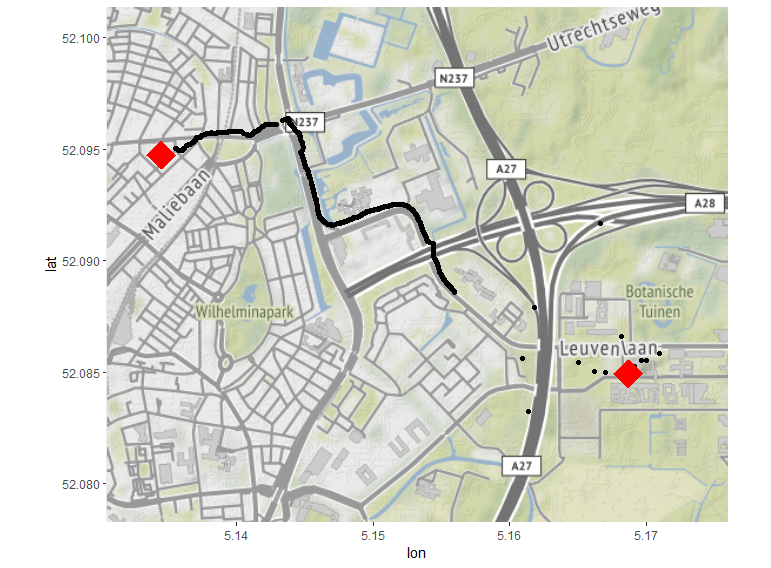
What is a stop (lvl 2)
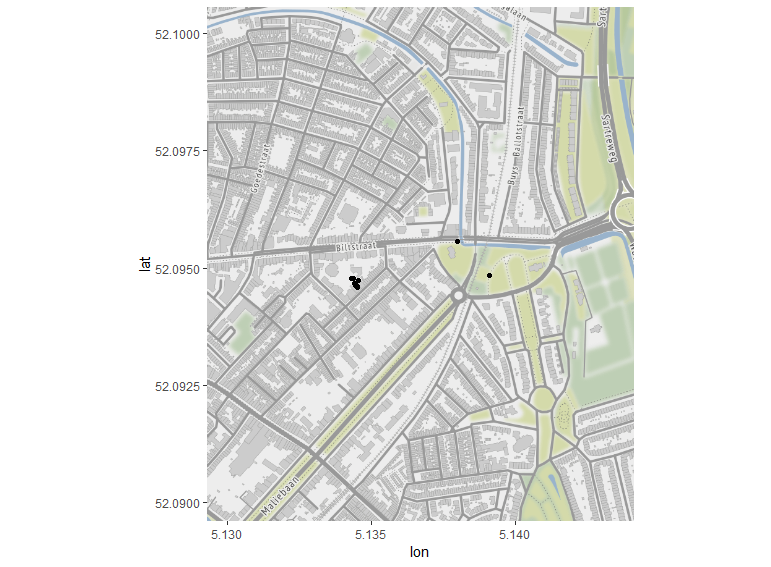
What is a stop (lvl 3)
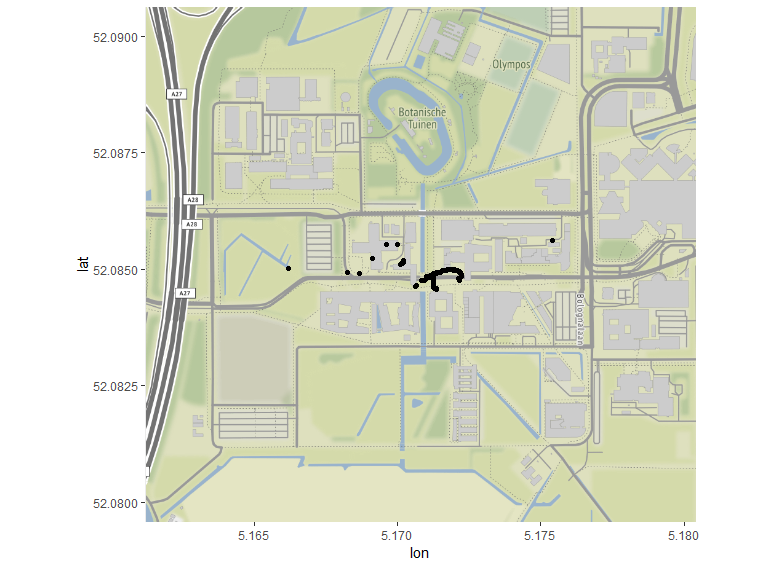
Not a stop
- Waiting at a stoplight
- Being stuck in traffic
- Switching Wi-Fi on and having your position change
A stop
- Going from one building to another on campus
- Taking your dog to the dog park
- Dropping your kid off at school
???
- Waiting for your train at the station
- Taking your dog for a walk
- Going to ask the neighbors for your package
Our stop definition
Two levels
- Data collection
- User interface
Data collection
Parameters trigger ‘high-tracking’ and ‘low-tracking’ modes on the device.
- Distance Delta Limit
- Time period within that radius
User interface
- Grouping radius
- Time
- Minimum Stop Accuracy
- Stop merge radius
- Stop merge max travel radius
Grouping radius parameter
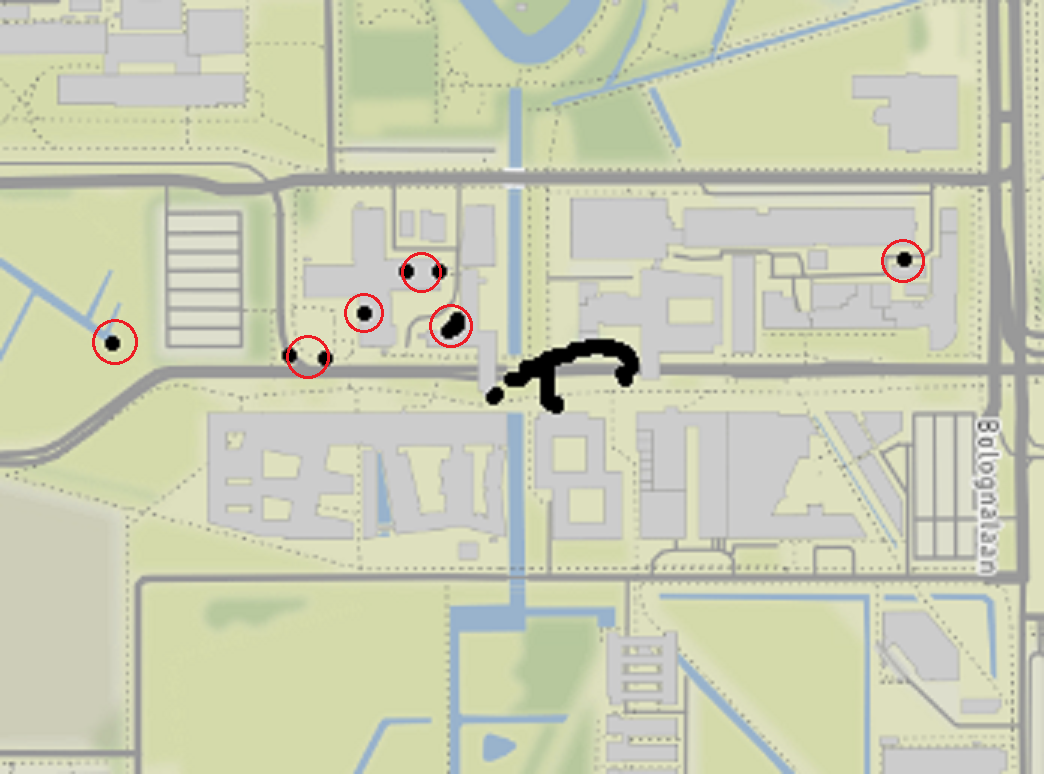
Time parameter
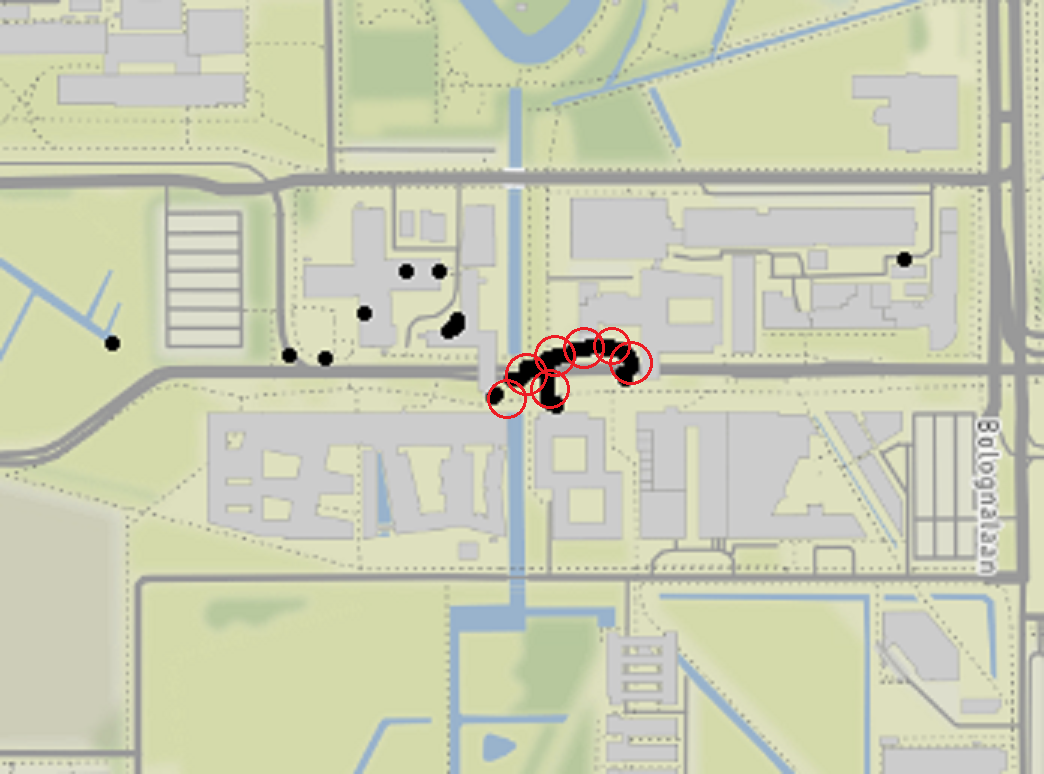
Better interpretation
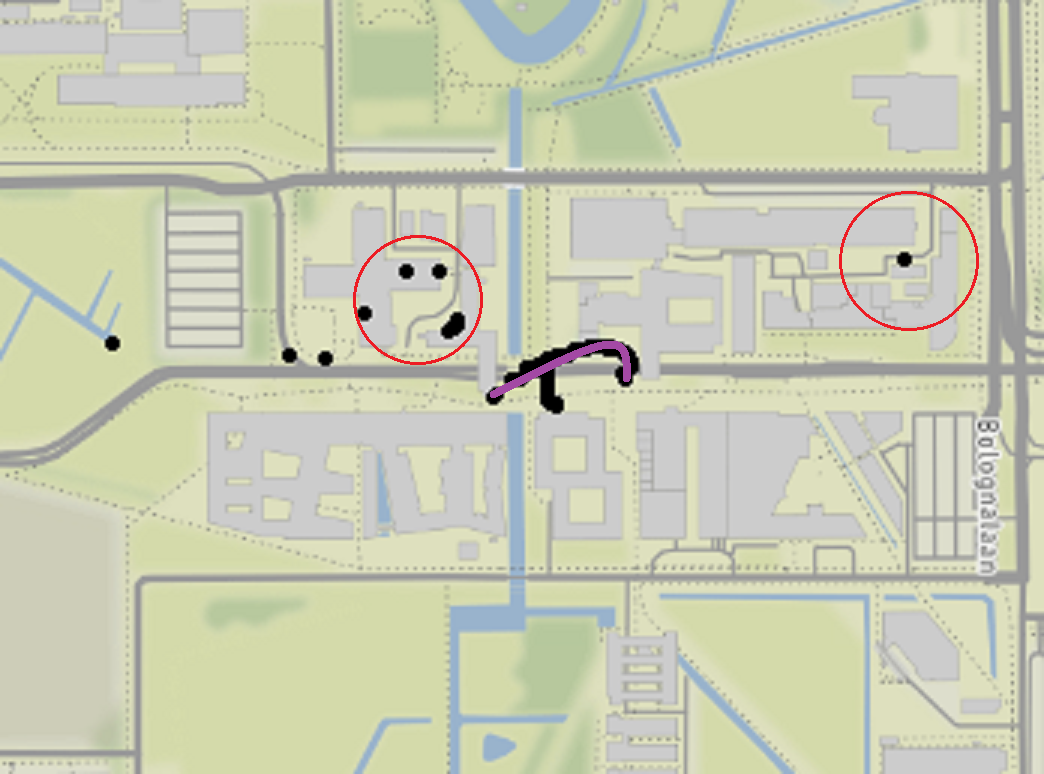
Missing data
Missing data occurs at myriad levels within this data.
- Recruitment
- App/device incompatibility
- App installation
- App closes itself
- App only has location on Wi-Fi or GPS
- Device dies
- Short losses due to tunnels or buildings
Missing data in the recruitment phase

Missing data over time per OS

Missing data within a day

Missing data within a trip

Next steps
PhD project consists of five projects (2018-2021):
- A descriptive paper over the app
- Adjustment for missing data in CBS verplaatsingen app
- Adjustment for measurement error/inaccurate measurements in CBS verplaatsingen app
- Two projects linked to time-use sensor data
Summary
- Field test with 1900 to make a first foray into replacing paper surveys
- App generally successful
- Self-reported stops are difficult to reproduce programmatically
- Lots of flavors of missingness
- Immediate issues: reporting distance to the stakeholders
Like to know more? * d.m.mccool@uu.nl or bstn@cbs.nl